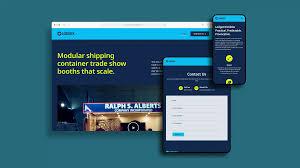How To Start A Web Design Business?

Starting a web design business is an ideal opportunity. The industry is growing at a rapid rate and now’s the time to invest in creating a successful brand. However, it is a competitive industry so it’s important to carefully lay the foundation for your business so you can avoid those “Wait, what???” scenarios that too many first-time business owners face.
So, in the following guide, we’re going to look at everything you need to do to become a successful web designer and business owner. You’ll learn:
- How to choose your design niche
- How to set your rates
- How to attract new clients
But first, let’s look at your current situation and make sure you’re in the best position to start a business.
1. Pick a Web Design Niche
Unless you have a ton of experience in a specific industry or building websites for certain kinds of folks, this might seem like an impossible task. Plus, why bother committing yourself to only one niche if you could design websites for everyone?
There’s actually a lot of value in choosing a niche as a web designer or web developer.
For starters, it’s so much easier to sell yourself to potential clients when you can say:
“I create beautiful online stores and shopper-friendly experiences for companies across the UK.”
Than:
“I’m a web designer.”
Having a well-defined niche also helps you more quickly identify leads that are a good fit for your business. You might not think that’s a big deal now, but opening yourself up to any and every job will only lead you down a time-consuming rabbit hole looking for new clients.
Instead, take some time right now to choose a niche for your business. It’s okay if it evolves over time. But, for right now, you need to lay down a clear path for yourself and the niche is the first step in doing that.
How to Choose the Perfect Web Design Niche
Ideally, you’ll operate within this niche for a long time to come, so it should be something that you’re passionate about and have the ability to succeed in. If either is lacking, it’ll be hard to stay committed to the work.
First things first, look at your past experiences. Were there any industries you enjoyed working in or you found particularly rewarding? This goes for your experiences as a web designer as well as in other roles.
Then, think about what it is you excel at and where your strongest skills lie. Are you more of a designer or a coder, or something in between the two? Do you have a specialty, for instance UX design or frontend development? You should also settle on one CMS, too. (If you’re here, that’s most likely means it’s WordPress.)
You might also want to narrow down your niche by location. That doesn’t necessarily mean opening an agency and buying office space downtown, but it does mean that you’ll focus on serving the local business community from wherever you operate.
Once you’ve settled on a niche, do some research to make sure:
- There are opportunities within this target niche.
- They can afford to pay for the kinds of websites you build.
When you’re happy with what you’ve come up with, move onto the next step.
2. Decide Which Design Services You’ll Offer
Look around at the existing solutions being offered to your target niche. What do they consist of?
Are they solely offering to build a website for a flat fee or are there other services baked in? How about web design services for small business-adjacent offerings, like website maintenance, managed hosting or consulting?
These days, it’s a good idea to consider ways to bring extra value to your client relationships. And the reason why is simple:
Website builder technologies like Wix and Weebly have made it easy for consumers to:
- Build their own websites.
- Pay a small monthly fee for them.
- Get their businesses online in a matter of days instead of weeks or months.
- Not have to worry about buying web hosting, themes and plugins or maintenance services.
In the minds of business owners, this is a huge win. All those annoying things they don’t want to worry about or pay for seem to be taken care of for them.
Unfortunately, WordPress doesn’t inherently make any of this easy for business owners. Which is why when you’re setting up your business, you need to figure out a way to make both your web design services and the WordPress CMS the most attractive option. It also doesn’t hurt that it’ll put more money in your pocket at the end of the day.
So, what can you reasonably offer to clients that they’d find valuable?
Finn & Gray, for example, offers a multi-pronged approach:
This agency provides clients with the following services:
- Logo and brand design
- Web design
- Photography and videography
For businesses that are just getting off the ground, this would be immensely helpful as they could use the same agency to take care of everything for them.
Then you have a company like Four Trees Media that offers digital, print and social media services:
For companies that intend on doing more than just sitting behind a website — like networking, advertising, growing an online community, etc. — offering a well-rounded service like this would make your business an attractive option.
Or you could start simple. This is how Proxy handles it:
- Art
- Causes
- Crafts
- Dance
- Drinks
- Film
- Fitness
- Food
- الألعاب
- Gardening
- Health
- الرئيسية
- Literature
- Music
- Networking
- أخرى
- Party
- Religion
- Shopping
- Sports
- Theater
- Wellness
- IT, Cloud, Software and Technology


